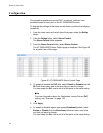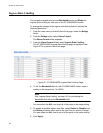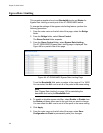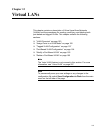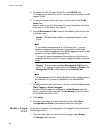AT-GS950/48PS Switch Web Interface User’s Guide
151
With VLANS, you can reconfigure the LAN segment assignment of an
end node connected to the AT-GS950/48PS switch’s management
software. Also, you can change the VLAN memberships without
moving the workstations physically or change group memberships
without moving cables from one port to another.
In addition, a virtual LAN can span more than one switch. This means
that the end nodes of a VLAN do not need to be connected to the
same switch and so are not restricted to being in the same physical
location.
The AT-GS950/48PS Gigabit Ethernet Smart Switch supports the
following types of VLANs:
Port-based VLANs
Tagged VLANs
Both types of VLANs are described in the following sections.
Port-based
VLAN Overview
As explained in the “VLAN Overview” on page 150, a VLAN consists of a
group of ports on an Ethernet switch that form an independent traffic
domain. This type of VLAN is independent of the header information
including VLAN tags in a frame. Traffic generated by the end nodes of a
VLAN remains within the VLAN and does not cross over to the end nodes
of other VLANs unless there is an interconnection device, such as a router
or Layer 3 switch.
A port-based VLAN is a group of ports on the switch that form a logical
Ethernet segment. A port-based VLAN can have as many or as few ports
as needed. The VLAN can consist of all the ports on an Ethernet switch, or
just a few ports.
There are two components of a port-based VLAN in the
AT-S111 Management software:
VLAN Name
VLAN Index
VLAN Name
To create a port-based VLAN, you must give it a unique name. This name
can reflect the function of the network devices that are VLAN members,
such as Sales, Production, and Engineering.
VLAN Index
You must assign a unique number to each VLAN in a network. This
number is called the Port-Based VLAN Index. This number uniquely
identifies a VLAN in the AT-GS950/48PS switch and across the network.




